This Is How Physicists Trick Particles Into Going Faster Than Light
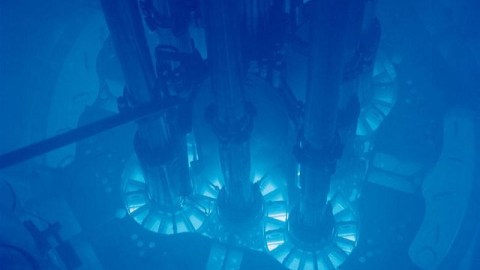
If you think nothing can move faster than light, check out this clever way to defeat that limit.
Nothing can move faster than the speed of light. When Einstein set forth his theory of relativity, this was his inviolable postulate: that there was an ultimate cosmic speed limit, and that only massless particles could ever attain it. All massive particles could only approach it, but would never reach it. The speed of light, according to Einstein, was the same for all observers in all reference frames, and no form of matter could ever attain it.
But this interpretation of Einstein omits an important caveat: all of this is only true in the vacuum of purely, perfectly empty space. Through a medium of any type — whether that’s air, water, glass, acrylic, or any gas, liquid, or solid — light travels at a measurably slower speed. Energetic particles, on the other hand, are only bound to travel slower than light in a vacuum, not light in a medium. By leveraging this property of nature, we truly can go faster than light.

Imagine a ray of light that travels directly away from the Sun. In the vacuum of space, if no particles or matter are present, it will indeed travel at the ultimate cosmic speed limit, c: 299,792,458 m/s, the speed of light in a vacuum. Although humanity has produced extremely energetic particles in colliders and accelerators — and detected even more energetic particles coming from extragalactic sources — we know we cannot break this limit.
At the LHC, the accelerated protons can reach speeds up to 299,792,455 m/s, just 3 m/s below the speed of light. At LEP, which accelerated electrons and positrons instead of protons in the same CERN tunnel that the LHC now occupies, the top particle speed was 299,792,457.9964 m/s, which is the fastest accelerated particle ever created. And the highest-energy cosmic ray clocks in with an extraordinary speed of 299,792,457.999999999999918 m/s, which would lose a race with a photon to Andromeda and back by only six seconds.
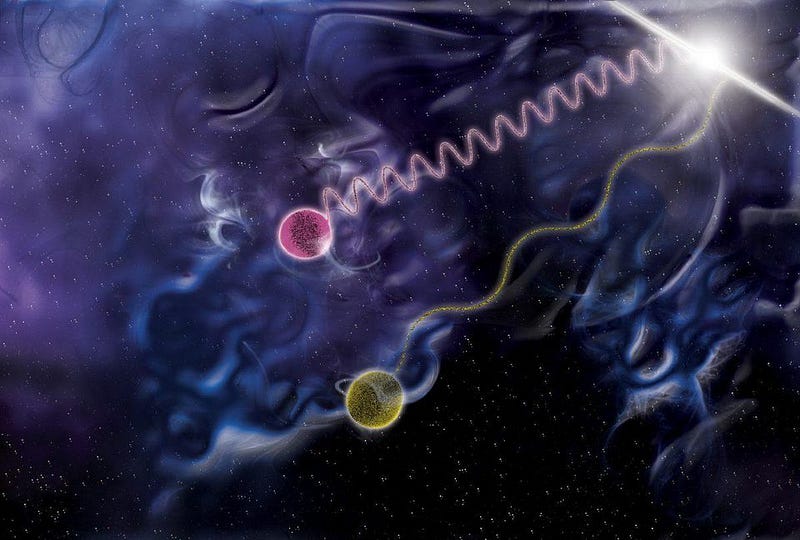
We can accelerate matter particles very close to the speed of light in a vacuum, but can never reach or exceed it. However, this doesn’t mean we can never go faster than light; it only means we cannot go faster than light in a vacuum. In a medium, the story is extremely different.
You can see this for yourself by passing a ray of sunlight that strikes Earth through a prism. While light moving through the air might be traveling at speeds so close to the speed of light in a vacuum that its departure is imperceptible, light through a prism clearly bends. This is due to the fact that the speed of light drops significantly in a denser medium: it’s just ~225,000,000 m/s in water and just 197,000,000 m/s in crown glass. This slow speed, combined with a variety of conservation laws, ensures that light both bends and disperses in a medium.
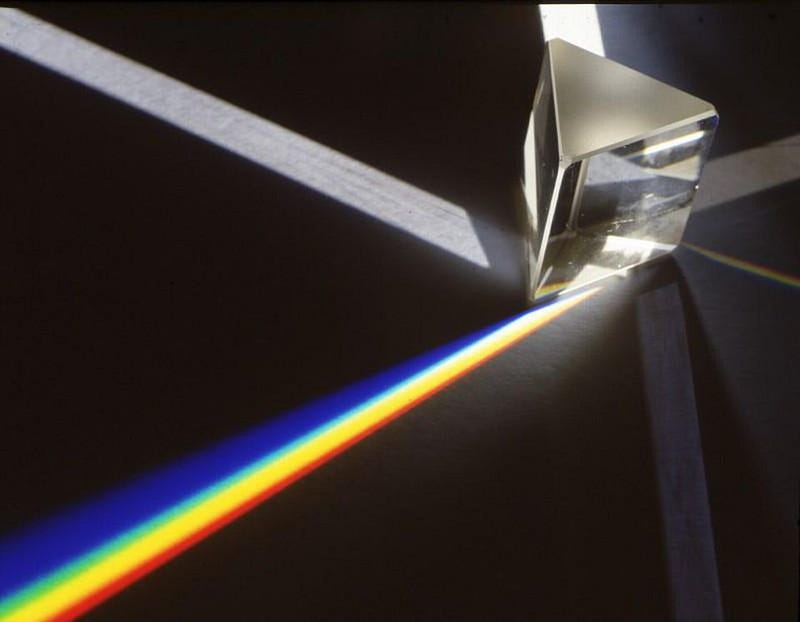
This property leads to an amazing prediction: the possibility that you can move faster than light, so long as you’re in a medium where the speed of light is below the speed of light in a vacuum. For example, many nuclear processes cause the emission of a charged particle — such as an electron — through fusion, fission, or radioactive decay. While these charged particles might be energetic and fast-moving, they can never reach the speed of light in a vacuum.
But if you pass that particle through a medium, even if it’s something as simple as water, it will suddenly find that it’s moving faster than the speed of light in that medium. As long as that medium is made up of matter particles and the faster-than-light particle is charged, it will emit a special form of radiation that is characteristic of this configuration: Čerenkov (pronounced Cherenkov) radiation.
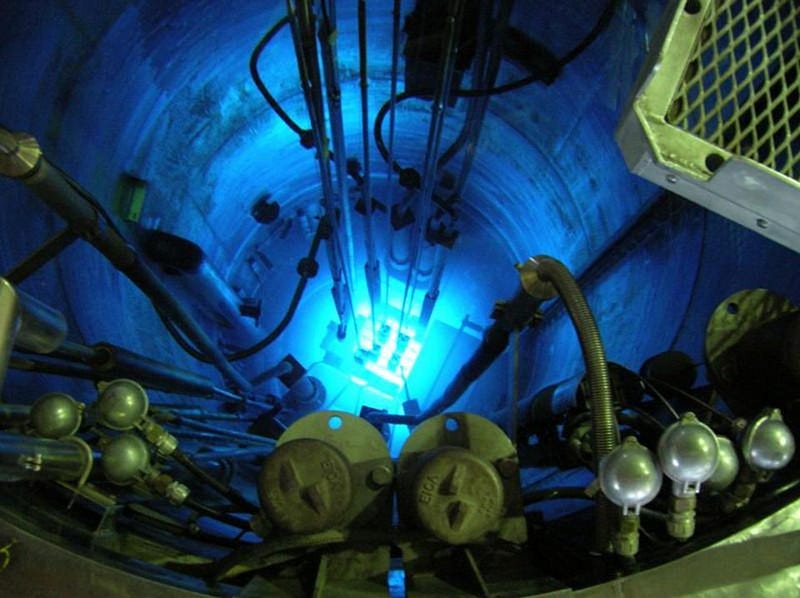
Čerenkov radiation characteristically appears as a blue glow, and gets emitted whenever a charged particle travels faster than light in a particular medium. It’s most commonly seen, as above, in the water surrounding nuclear reactors. The reactions inside cause the emission of high-energy particles that move faster than light in water, but substantial amounts of water surround the reactor in order to shield the external environment from the harmful emission of radiation.
This is remarkably effective! There are electromagnetic interactions that occur between the charged particle in motion and the (charged) particles making up the medium it’s traveling through, and those interactions cause the traveling particle to emit radiation of a particular energy in all allowable directions: radially outward, perpendicular to the direction of its motion.

But since the particle emitting the radiation is in motion, and since it’s moving so quickly, all of those emitted photons are going to be boosted. Instead of getting a ring of photons that simply moves outward, this particle — moving faster than light in the medium it travels through — will emit a cone of radiation that travels in the same direction of motion as the particle emitting it.
The Čerenkov radiation comes out at an angle defined by two factors only:
- the speed of the particle (v_particle, faster than light in the medium but slower than light in a vacuum),
- and the speed of light in the medium (v_light).
In fact, the formula is really simple: θ = arccos (v_light/v_particle). In plain English, this means that the angle that the light comes off at is the inverse cosine of the ratio of those two speeds, the speed of light in the medium to the speed of the particle.
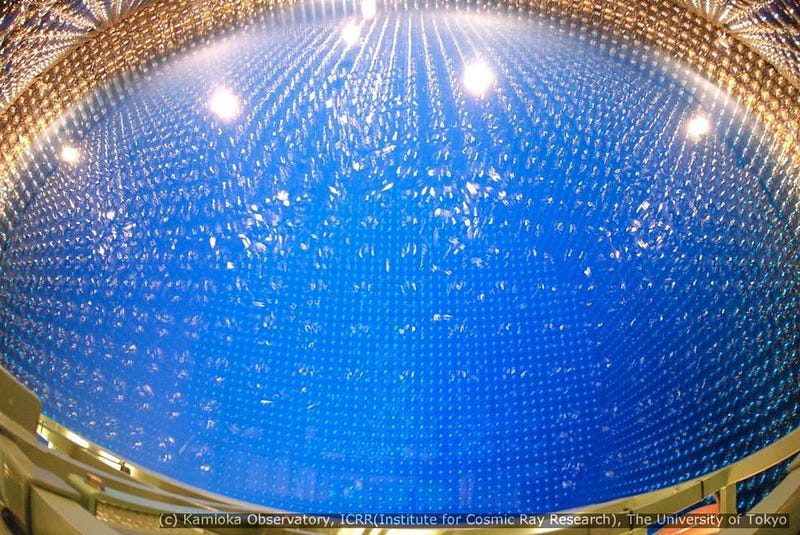
There are a few important things to notice about Čerenkov radiation. The first is that it carries both energy and momentum, which by necessity has to come from the particle that’s moving faster than light in the medium. This means that particles that emit Čerenkov radiation slow down due to its emission.
The second is that the angle that the Čerenkov radiation is emitted at allows us to determine the speed of the particle that caused its emission. If you can measure the Čerenkov light that originates from a particular particle, you can reconstruct that particle’s properties. The way this works, in practice, is that you can set up a large tank of material with photomultiplier tubes (capable of detecting individual photons) lining the edge, and the detected Čerenkov radiation allows you to reconstruct properties of the incoming particle, including where it originated in your detector.
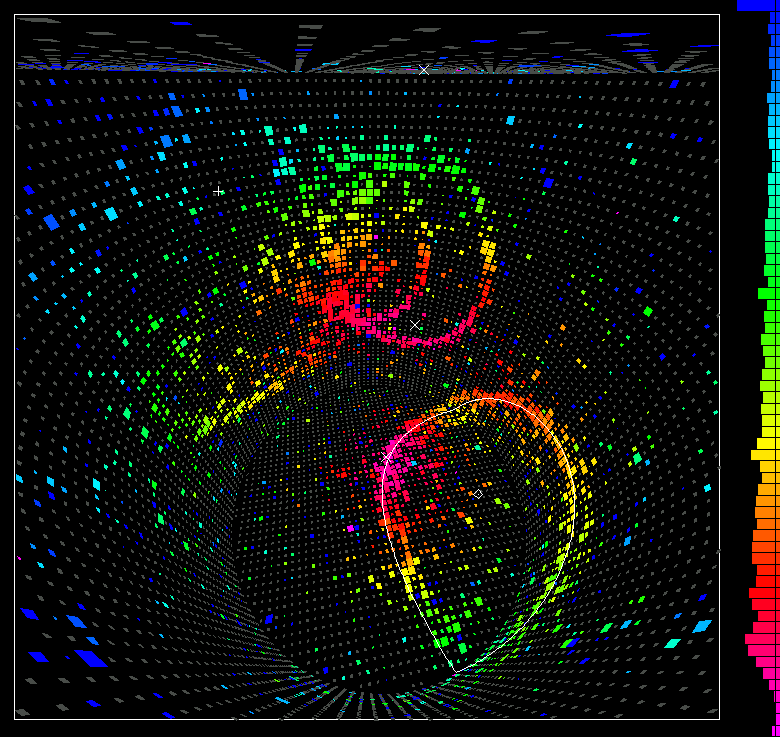
Interestingly enough, Čerenkov radiation was theorized even before Einstein’s theory of relativity, where it languished in obscurity. Mathematician Oliver Heaviside predicted it in 1888–9, and independently Arnold Sommerfeld (who helped quantize the hydrogen atom) did it in 1904. But with the advent of Einstein’s 1905 special relativity, nobody was interested enough in this line of thought to pick it up again. Even when Marie Curie observed blue light in a concentrated radium solution (in 1910), she did not investigate its origin.
Instead, it fell to a young researcher named Pavel Čerenkov, who was working on the luminescence of heavy elements. When you excite an element, its electrons spontaneously de-excite, cascading down in energy levels and emitting light as they do. What Čerenkov noticed, and then investigated, was blue light that did not fit solely within this framework. Something else was at play.

Čerenkov prepared aqueous solutions that were rich in radioactivity, and noticed that characteristic blue light. When you have a fluorescent phenomenon, where electrons de-excite and emit visible radiation, that radiation is isotropic: the same in all directions. But with a radioactive source in water, the radiation wasn’t isotropic, but rather came out in cones. Those cones were later shown to correspond to emitted charged particles. The new form of radiation, poorly understood at the time of Čerenkov’s 1934 discovery, was therefore named Čerenkov radiation.
Three years later, Čerenkov’s theoretical colleagues Igor Tamm and Ilya Frank were able to successfully describe these effects within the context of relativity and electromagnetism, which led to Čerenkov detectors becoming a useful and standard technique in experimental particle physics. The three shared the Nobel Prize in Physics in 1958.
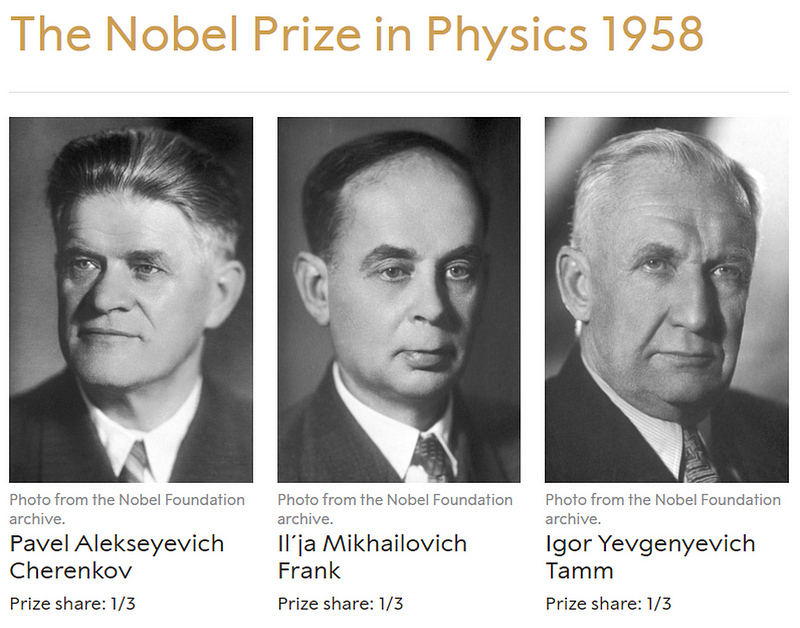
Čerenkov radiation is such a remarkable phenomenon that when the first accelerated electrons, in the early days of particle physics in the United States, physicists would close one eye and put it in the path of where the electron beam ought to have been. If the beam was on, the electrons would produce Čerenkov radiation in the aqueous environment of the physicist’s eyeball, and those flashes of light would indicate that relativistic electrons were being produced. Once the effects of radiation on the human body became better understood, safety precautions were put in place to prevent physicists from poisoning themselves.
But the underlying phenomenon is the same no matter where you go: a charged particle moving faster than light moves in a medium will emit a cone of blue radiation, slowing down while revealing information about its energy and momentum. You still can’t break the ultimate cosmic speed limit, but unless you’re in a true, perfect vacuum, you can always go faster than light. All you need is enough energy.
Ethan Siegel is the author of Beyond the Galaxy and Treknology. You can pre-order his third book, currently in development: the Encyclopaedia Cosmologica.





